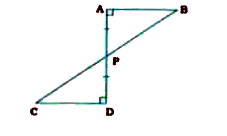Social Studies Application: Remembering that 1AD came immediately after 1BC, while solving these problems take 1BC as –1 and 1AD as +1
Greek mathematician Archimedes lived between 287 BC and 212 BC and Aristotle lived between 380 BC and 322 BC. Who lived during an earlier period?
To determine who lived during an earlier period between Archimedes and Aristotle, we need to analyze the time frames in which both mathematicians lived.
1. Identify the Time Periods:
- Archimedes lived between 287 BC and 212 BC.
- Aristotle lived between 380 BC and 322 BC.
2. Convert the Time Periods to a Common Format:
- For Archimedes:
- Start Year: 287 BC = -287
- End Year: 212 BC = -212
- For Aristotle:
- Start Year: 380 BC = -380
- End Year: 322 BC = -322
3. Compare the Start Years:
- Archimedes starts at -287.
- Aristotle starts at -380.
4. Determine Which Year is Earlier:
- Since -380 (Aristotle) is less than -287 (Archimedes), Aristotle lived earlier than Archimedes.
5. Conclusion:
- Therefore, Aristotle lived during an earlier period than Archimedes.
Final Answer:
Aristotle lived during an earlier period.
- Archimedes lived between 287 BC and 212 BC.
- Aristotle lived between 380 BC and 322 BC.
- For Archimedes:
- Start Year: 287 BC = -287
- End Year: 212 BC = -212
- For Aristotle:
- Start Year: 380 BC = -380
- End Year: 322 BC = -322
- Archimedes starts at -287.
- Aristotle starts at -380.
- Since -380 (Aristotle) is less than -287 (Archimedes), Aristotle lived earlier than Archimedes.
- Therefore, Aristotle lived during an earlier period than Archimedes.
Aristotle lived during an earlier period.
Topper's Solved these Questions
- INTEGERSBOOK - NCERT EXEMPLARCHAPTER - INTEGERSEXERCISE - (D) APPLICATION (Puzzle)
5 Videos
- INTEGERSBOOK - NCERT EXEMPLARCHAPTER - INTEGERSEXERCISE - THINK AND DISCUSS
13 Videos
- INTEGERSBOOK - NCERT EXEMPLARCHAPTER - INTEGERSEXERCISE - VOCOBULARY
5 Videos
- FRACTIONS AND DECIMALSBOOK - NCERT EXEMPLARCHAPTER - FRACTIONS AND DECIMALSEXERCISE - EXERCISE (FIND THE ERROR)
3 Videos
- LINES AND ANGLES BOOK - NCERT EXEMPLARCHAPTER - LINES AND ANGLES EXERCISE - Exercise (fill in the blanks)
3 Videos
Similar Questions
Social Studies Application: Remembering that 1AD came immediately after 1BC, while solving these problems take 1BC as –1 and 1AD as +1
Bhaskaracharya was born in the year 1114 AD and died in the year 1185 AD. What was his age when he died?
View SolutionSocial Studies Application: Remembering that 1AD came immediately after 1BC, while solving these problems take 1BC as –1 and 1AD as +1
The Greeco-Roman era, when Greece and Rome ruled Egypt started in the year 330 BC and ended in the year 395 AD. How long did this era last?
View Solution
Knowledge Check
If A = 13B and B=12C,thenA : B : C?
A1 : 3 : 6B1 : 2 : 6C1 : 6 : 3D3 : 1 : 6In ΔBC ,AD is the median and AD=1/2BC IF ∠BAD=30∘ then measure of ∠ACB is
A90∘B45∘C30∘D60∘
Social Studies Application: Remembering that 1AD came immediately after 1BC, while solving these problems take 1BC as –1 and 1AD as +1
Turks ruled Egypt in the year 1517 AD and Queen Nefertis ruled Egypt about 2900 years before the Turks ruled. In what year did she rule?
View SolutionA(1, 1), B(7, 3) and C(3, 6) are the vertices of a △ABC. If D is the midpoint of BC and AL BC, find the slopes of (i) AD and (ii) AL.
View SolutionIn a triangle ABC,XandY are the points on ABandBC respectively. If BX=12ABandBY=12BCandAB=BC. Show that BX=BY.
View SolutionIn an equilateral triangle ABC, D is a point on side BC such that BD=13BC. Prove that 9AD2=7AB2.
View SolutionIn the given figure, AB and DC are both perpendicular to line segment AD. BC intersects AD at P and P is the midpoint of AD. Prove that, ( 1 ) AB = CD ( 2 ) P is the midpoint of BC.

View SolutionΔABC is an equilateral triangle. Point P is on base BC such PC=13BC, if AB=6 cm find AP.
View Solution